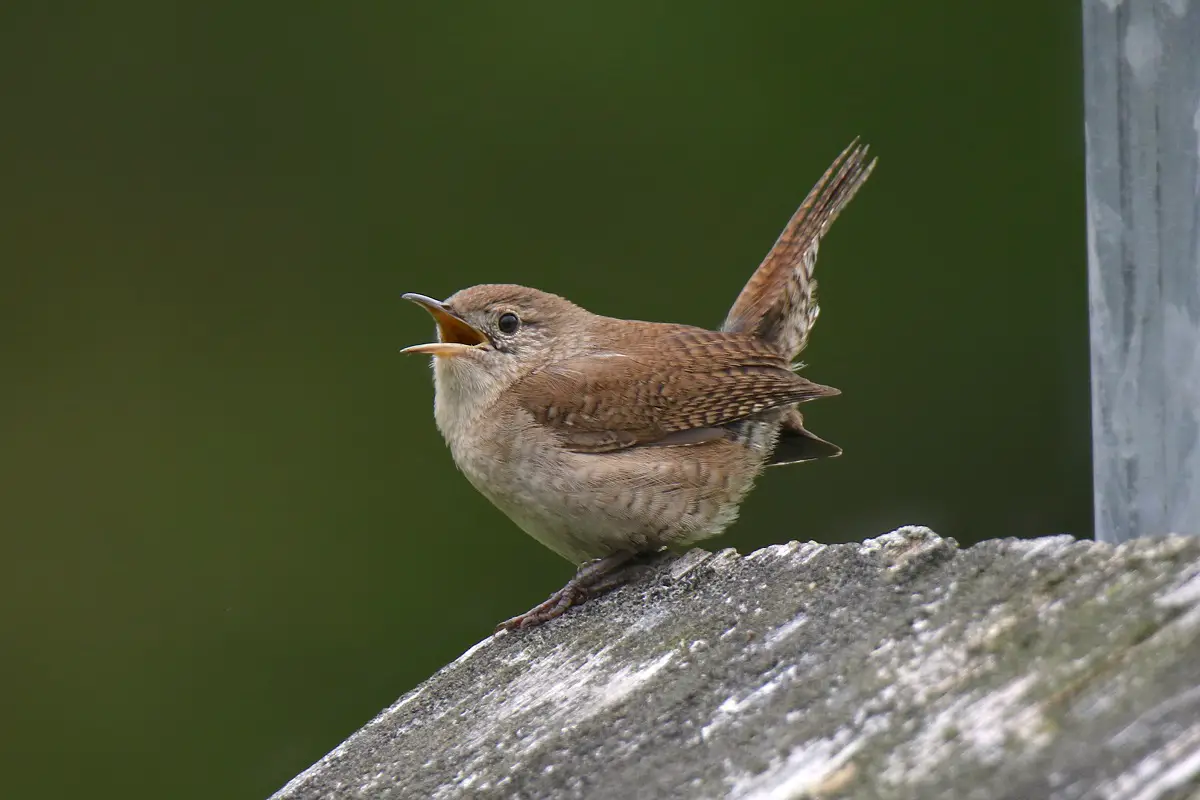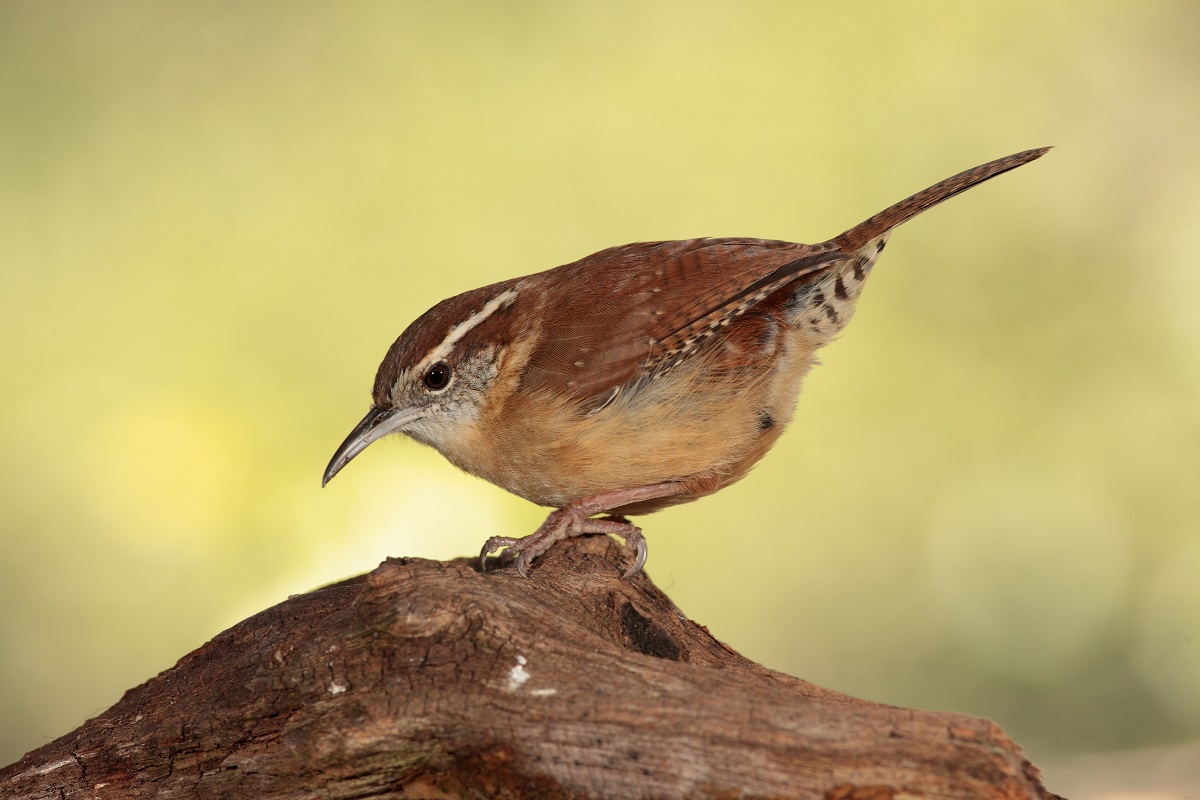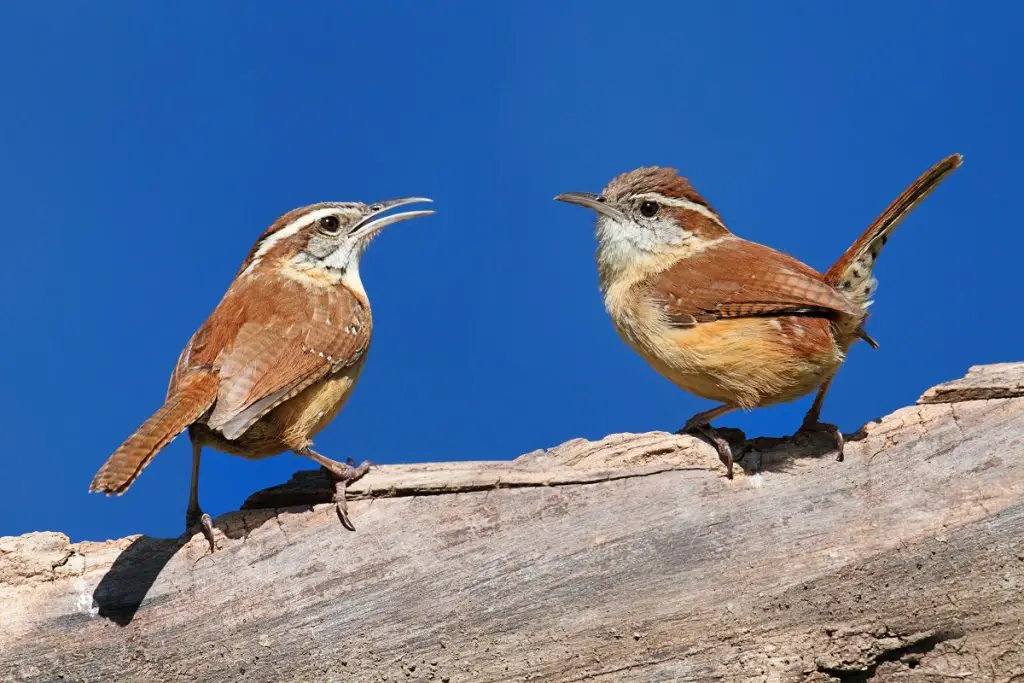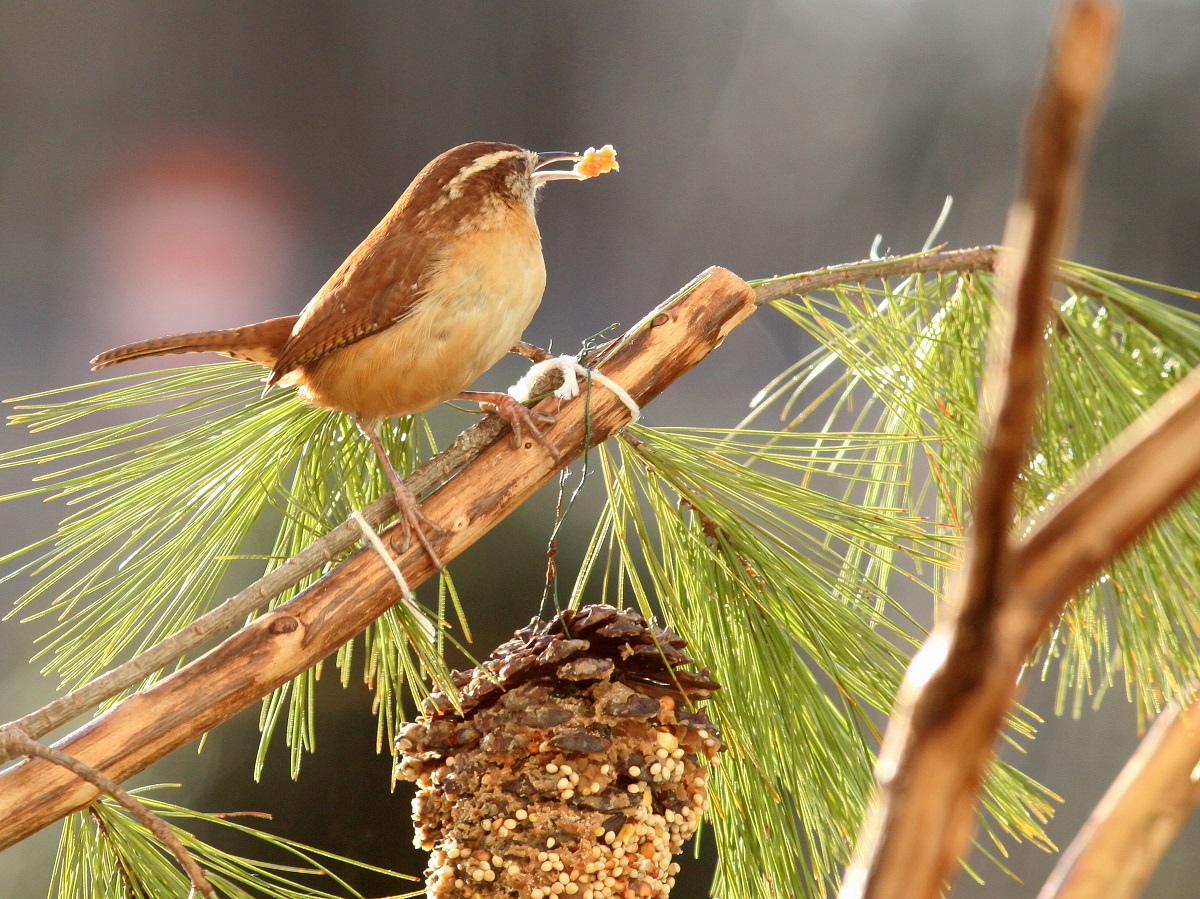Wrens have their own diverse sounds. From the Carolina wren's tweedle-dee to the raspy car sound of the cactus wren song, the songs vary not only from other species of birds to different types of wrens too. To attract these singers to your yard, just put out some mealworms, sunflower seeds, and suet.
Each wren bird has its own unique bird song. The Carolina wren song is one of the most recognizable sounds, with tweets that sound a lot like teakettle, teakettle, teakettle. Some wren bird songs are more abrupt, with short notes and high trills. One species of wren even sounds like a car trying to start!
Depending on where you’re birdwatching in North America, there are several wren bird songs with their own unique sound. There are even birds like the chickadee and the Kentucky warbler, whose songs are often mistaken for wren bird sounds. We will cover the sounds of different wren bird sounds and also cover how to tell the sound-a-like bird songs apart.
What Does The Carolina Wren Song Sound Like?
Many bird watchers describe the Carolina wren song as a teakettle, teakettle, teakettle sound. (Others hear it as teacher, teacher, teacher or cheater, cheater, cheater.) But the Carolina wren song has several different phrases. Some notes are little tweets, while others sound a bit like tweedle-dee, tweedle-dee, tweedle-dee.
Male Carolina wrens sing more often than females, though mated pairs will duet as a form of communication. Carolina wren calls are also influenced by the amount of ambient noise caused by human influence. The louder their environment, the louder and more often the Carolina wren sings.
Do Carolina Wrens And House Wrens Sing The Same Bird Song?


The house wren and the Carolina wren songs sound entirely different. Carolina wrens sing in melodious notes slurred together, while house wrens favor more staccato notes. In the eastern United States, where house wren and Carolina wrens can be found in the same area, the difference in the song can help you tell the two wren birds apart if you can’t see them.
House wrens are boisterous singers who use a jumbled and often abrupt mix of churrs and chatters in their songs. Both males and females sing, using duets to communicate like other wren birds. The female house wren will also call to the male from the nest, using the bird song to let the male know to bring food to the nest site.
What Backyard Bird Sounds Like Wren Bird Songs?
Sparrow birds’ songs are sometimes confused with house wren songs. These songbirds have a similar range in North America and are often found singing together with other backyard birds. The harsh trill and staccato notes used in the bird song of the sparrow and the house wren sound a lot alike at first.
Sparrows have a little more buzz to their bird song than a house wren. Also, sparrows tend to mix several sounds together in rapid-fire changes and end on a buzz or trill. House wren songs start and end abruptly with a less metallic sound in their trill.
Kentucky warblers are another bird sound often confused with the Carolina wren song. The Kentucky warbler’s tweet tweet tweet sounds similar, but they tend to use a single-syllable song. If the bird song you’re hearing has multiple syllables, then you’re likely hearing the Carolina wren song.

Do Both Male And Female Wren Birds Sing?
For the most part, both male and female wren birds sing. Females may sing a duet with their mates or call out to communicate. While female songbirds’ singing has been under-studied across all species, female wrens are known to sing with few exceptions.
One exception is the Bewick’s wrens. Only the male sings, and males will even sing to and with other males while foraging. The female Bewick’s wren calls out to communicate or when alarmed, but her raspy scurr sound is completely different than the high trills and warbles of the male Bewick’s wren.
Cactus wrens are another exception. The female cactus wren does sing, but her bird song is incredibly rare and is much higher pitched. The male cactus wren has a very interesting desert song. The cactus wren’s raspy song is often compared to a car engine that refuses to turn over.
Do Carolina Wrens Respond To Singing Chickadees?
While backyard birds flocking together will sing simultaneously, wren birds and chickadees do not respond directly to each other. The similar-looking chickadee and Carolina wren will visit feeders and bird baths together, but when it comes to bird calls, bird species tend to communicate only with their own kind. While the chickadee-dee-dee song might overlap the Carolina wren’s tweedle-dee, the two species are not communicating directly with each other.
Even counter-singing behavior is usually meant for birds from the same species. Male Carolina wrens use counter-singing to let other males know they are being challenged. It’s an aggressive, territorial behavior, with one male starting their bird song to drown out another male nearby. The bird call is meant both for the opposing male and to let any females know they have mating options.
Counter-singing is sometimes used to ward off predators or warn away larger birds. Blue jays are often found in the same areas as wren birds. Wrens view the much larger bird as a threat and will use a series of loud chirps to sound the alarm and scare blue jays away. House wrens will even snap their beak shut while calling, creating an intimidating clicking noise.
Where Can I Hear A Wren Bird Singing?
Wren birds are found all over North America. Since they prefer habitats with open woodlands, you can often hear wren birds singing in forests. In many parts of North America, several species of wren birds overlap, adding to the already glorious nature sounds in the coniferous forests they favor.
The Cornell Lab of Ornithology also maintains an extensive catalog of bird sounds. The Macaulay Library sound clips are divided by family and species, which makes finding the exact bird song you’re looking for a breeze. They often have full videos of songbirds available, helping connect the bird sound to the specific species of bird.
YouTube has a great selection of videos with bird songs too. The advantage is that you can see the bird in action and hear the music more clearly.
How Can I Attract Wren Birds To My Backyard?
Like most backyard birds, wrens are attracted to bird feeders filled with their favorite foods. Dry mealworms and sunflower seeds are a big hit with wren bird species throughout North America. They are also fond of peanut butter-based suet.
You can provide birdhouses and nesting boxes for wrens as well. While they will often use old woodpecker holes as nesting sites, a well-placed birdhouse or nesting box is just as attractive to wrens. Make sure to place nesting boxes and birdhouses a good distance from bird feeders. Bird seed attracts predators and makes your backyard unsafe for songbirds.
Once you can identify each wren bird’s unique song, telling the different bird sounds apart is easier. Even the sound-a-like birds have a completely different song than wrens birds. For identifying birds like the Carolina wren and the elusive Kentucky warbler, knowing the songs of different birds can help you determine the species, even if you never see the singing bird.

